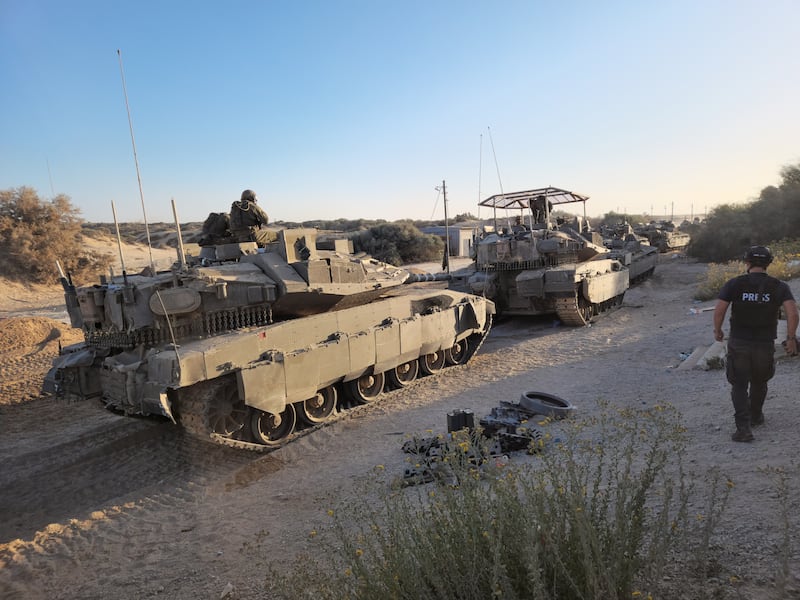The wall of a school had shattered into rubble. The minaret of a mosque was tilting to one side. The roof of a beachfront villa had vanished, leaving a maroon sofa exposed to the elements.
Along the northern coastline of the Gaza Strip on Saturday afternoon, signs of the Israeli invasion were in plain sight. And all of these places, damaged in an Israeli attack, had served as a place of refuge for Hamas militants who tried to repel the assault, field commanders who manage the Israeli army’s combat troops said Saturday.
Israeli military leaders brought a small group of journalists into northern Gaza on Saturday for two hours to witness the extent of the advance. A reporter for The New York Times was among them.
Thousands of troops began their incursion down the coastline on October 27th, one part of a three-pronged invasive force that aims to vanquish Hamas, the armed Palestinian group that controls Gaza and led a brazen raid on Israel last month that killed roughly 1,400 people.
READ MORE

Eight days later, the Israeli army has fought its way several miles to the south, reaching the outskirts of Gaza City, Hamas’ stronghold, and establishing control over the northern stretch of Gaza’s coastal road.
Less than a month ago, the northern coastline of Gaza was a quiet seafront. On Saturday, it was a giant Israeli military camp.
Long lines of infantry marched south along the road, blowing plumes of dust into the air. In the sand dunes east of the road, long rows of tanks and armoured vehicles dominated the landscape, stretching toward the horizon.
Many buildings were wrecked, their walls sprayed with bullet holes. Some were most likely hit from the air during an Israeli bombing campaign that has killed more than 9,000 people in Gaza, according to Gaza’s health ministry, which is controlled by Hamas.
Palestinian residents had fled south, abandoning the seafront to the Israeli soldiers and a few stray dogs and cats.
An Israeli officer accompanying the journalists, lieut col Iddo Ben-Anat, projected an image of quiet confidence.
“It’s like catching a mouse,” Ben-Anat said of the enemy. “You have to find him. You know he’s there. You don’t know where he is – but you know when you catch him, he’s done.”
But all around him were the sounds of an unfinished and undecided war.

Shortly after the journalists entered Gaza through a hole in the wall lining its perimeter, a mortar shell landed close to the armoured vehicle that carried them south.
A few minutes later, a roadside bomb exploded as the vehicle passed by, creating a brief fireball and sending sand toward the sky. Gunfire rattled constantly.
Bloodier battles await Israelis in Gaza City, where Hamas fighters are believed to have entrenched themselves in a network of underground tunnels hundreds of miles long.
For civilians in the city, that was a terrifying prospect.
Saher Abu Adgham (37) a Palestinian graphic designer, had been searching the streets of Gaza City for firewood to use to boil some rice. As dusk approached, he bedded down at home in case the Israeli army advanced at nightfall.
“I am afraid to go out one night and meet a tank,” Abu Adgham said in a phone interview. – This article originally appeared in The New York Times
2023 The New York Times Company













